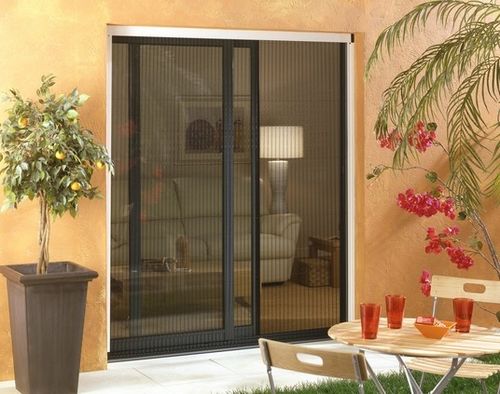The Europe insect screen market is witnessing robust growth, driven by increasing awareness of hygiene, growing urbanization, and the rise in modern housing infrastructure across the continent. Valued at US$ 285.4 million in 2024, the market is projected to expand steadily at a CAGR of 5.0% between 2025 and 2035, ultimately reaching US$ 480.0 million by 2035. The adoption of insect screens in both residential and commercial spaces has increased significantly as consumers prioritize healthier and more comfortable living conditions. Insect screens, which serve as physical barriers to prevent the entry of insects while allowing ventilation, have become integral to window and door systems in European homes, hotels, hospitals, and restaurants. The region’s focus on sustainable construction practices, combined with rising temperatures and insect-borne diseases, has accelerated demand for advanced screen materials that are durable, eco-friendly, and aesthetically compatible with modern architectural designs.
Growth Drivers
One of the key growth drivers of the Europe insect screen market is the growing consumer inclination toward energy-efficient housing solutions. Insect screens enable natural airflow, reducing the dependence on air conditioning systems and consequently lowering household energy consumption. As European nations continue to push toward their carbon neutrality goals, such sustainable solutions are increasingly embraced by both builders and homeowners. Moreover, climate change and warmer summers have led to a noticeable increase in insect activity across the continent, further reinforcing the demand for effective insect protection systems.
Additionally, technological advancements in screen materials and installation techniques have transformed the industry landscape. Manufacturers are introducing retractable, magnetic, and roller-based screen systems that are easy to install, maintain, and operate. The integration of these screens into smart home solutions has also gained traction, especially in countries like Germany, France, and the UK, where the adoption of home automation technologies is high. Furthermore, rising disposable income and changing lifestyle preferences among European consumers have created a favorable market environment for premium insect screen products offering enhanced functionality and design versatility.
Restraints
Despite promising growth, the Europe insect screen market faces certain restraints that could hinder its expansion. The high initial installation cost of advanced insect screen systems, particularly for retractable or automated variants, limits adoption in cost-sensitive markets and among small residential builders. Additionally, seasonal demand fluctuations—with higher sales concentrated in the warmer months—create challenges for manufacturers in managing production and inventory efficiently.
Another critical restraint is the limited awareness in certain parts of Eastern and Southern Europe, where traditional methods of insect prevention, such as chemical repellents or mosquito nets, are still more prevalent due to affordability and familiarity. Furthermore, competition from low-cost imports from Asia has put pressure on local manufacturers to reduce prices, often at the expense of profit margins. Regulatory compliance regarding materials, sustainability standards, and safety norms also adds to the operational complexities faced by market participants.
Report Scope
The report on the Europe insect screen market provides a comprehensive analysis of current market trends, growth potential, and strategic developments across various industry segments. It covers in-depth insights into product innovations, technological advancements, competitive landscape, and evolving consumer preferences. The scope extends to residential, commercial, and industrial applications, highlighting demand variations across each end-use category. The study further explores material types such as fiberglass, aluminum, stainless steel, and polyester, assessing their respective advantages and market shares.
The report also evaluates the influence of macroeconomic factors such as construction spending, climate conditions, and government initiatives promoting sustainable housing. By offering detailed forecasts and scenario analyses, it enables stakeholders—including manufacturers, distributors, and investors—to identify emerging opportunities and formulate effective growth strategies.
Segmentation
The Europe insect screen market is segmented based on product type, material, end-use, and country.
- By product type, the market includes fixed screens, sliding screens, retractable screens, and magnetic screens. Retractable screens are expected to witness the highest growth due to their versatility and aesthetic appeal.
- By material, fiberglass dominates the market, attributed to its cost-effectiveness, durability, and corrosion resistance. Aluminum and stainless steel screens, though more expensive, are gaining popularity in premium applications due to their longevity and strength.
- By end-use, the residential segment holds the largest share, driven by the growing trend of home renovation and modernization across Europe. The commercial sector, particularly hospitality and healthcare, is also emerging as a significant contributor.
- By country, Germany, the UK, France, and Italy represent major markets, while Eastern Europe is projected to register faster growth due to increasing construction activity and urbanization.
Regional Analysis
Geographically, Western Europe leads the insect screen market, with countries like Germany, France, and the UK accounting for the majority of the revenue share. The region’s advanced infrastructure, stringent building regulations, and high consumer awareness contribute to its market dominance. Meanwhile, Southern Europe, including Italy and Spain, is experiencing rising demand due to warmer climates and growing tourism-related construction. Eastern Europe presents untapped potential, driven by increasing government investment in affordable housing and the gradual shift toward modern living standards.
Furthermore, the presence of global and regional manufacturers in Europe ensures a competitive yet innovative environment, with companies constantly introducing improved designs and eco-friendly materials tailored to regional needs.
Competitive Analysis
The Europe insect screen market features a highly competitive landscape, with both global and regional players striving for technological innovation and market expansion. Key participants include Atlas Copco Group, Bry-Air (Asia) Pvt Ltd, Condair Group, Desiccant Technologies Group, Josem Group, Munters, Seibu Giken DST AB, Krüger + Co. AG, Zhejiang Preair Electrical Appliance Industry Co., Ltd., Lanye Environmental Technology, LG Corp., Haier Group, Whirlpool Corporation, De’Longhi Group, and Electrolux Group. These companies focus on product differentiation, strategic partnerships, and sustainable manufacturing practices to strengthen their market presence.
Continuous R&D efforts are directed toward enhancing material efficiency, automation compatibility, and ease of maintenance. As sustainability continues to shape consumer and regulatory expectations, companies investing in eco-friendly, recyclable, and energy-saving insect screen solutions are likely to maintain a competitive edge in the European market through 2035.
- Europe Insect Screen Market Outlook 2035 | Growth, Trends & Forecast
- Explore the Europe insect screen market, valued at US$ 285.4M in 2024, projected to reach US$ 480M by 2035. Discover key growth drivers, market trends, segmentation, regional analysis, and top competitive players shaping the industry.
- Europe insect screen market, insect screen industry Europe, insect screen market forecast, Europe market trends 2035, retractable screens, residential insect screens, commercial insect screens, fiberglass insect screens, sustainable home solutions, Europe market analysis
Related posts:
No related posts.





